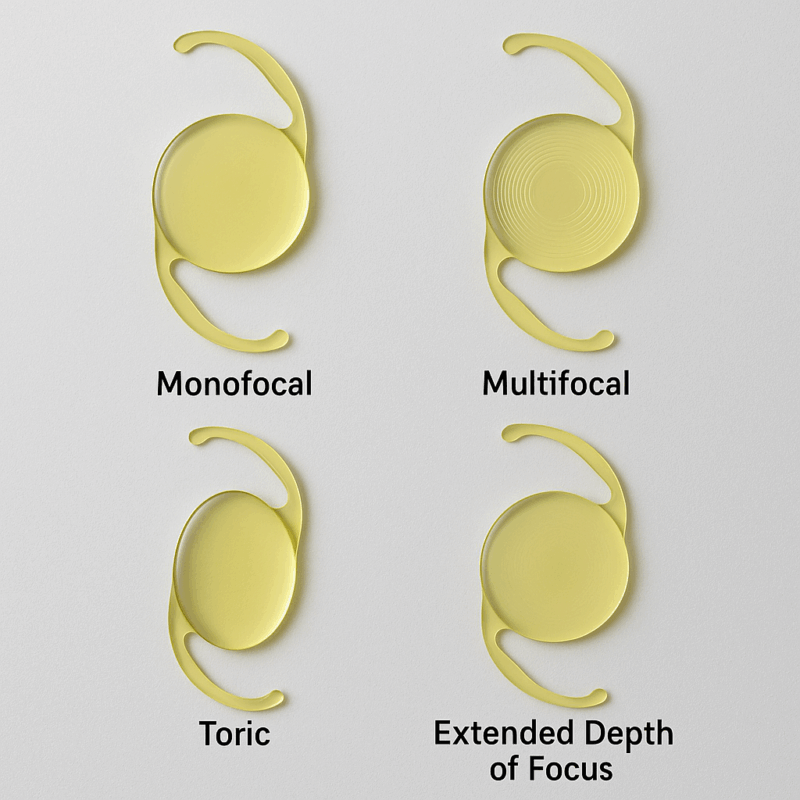Introduction to Cataract Surgery
What is a cataract?
A cataract is a clouding of the natural lens in your eye, which causes blurry vision, sensitivity to light, and difficulty seeing at night. It’s a common condition, especially in older adults. How Do You Choose Lenses for Cataract Surgery? How Do You Choose Lenses for Cataract Surgery?

Why Cataract Surgery is Necessary
Cataract surgery becomes necessary when the cloudiness interferes with daily activities like reading, driving, or even recognizing faces. During surgery, the cloudy lens is replaced with a clear artificial lens called an intraocular lens (IOL).
Importance of Choosing the Right Lens
Choosing the right lens is like picking the right pair of shoes—it should fit your lifestyle, needs, and expectations. Not all lenses are created equal, and your choice can affect your vision for the rest of your life.
Understanding Intraocular Lenses (IOLs)
What Are Intraocular Lenses?
IOLs are small, clear, plastic lenses implanted inside your eye during cataract surgery. They serve as a permanent replacement for your eye’s natural lens.
How IOLs Replace the Clouded Natural Lens
After removing the clouded lens, the surgeon places the IOL in the same spot to restore clear vision. Once placed, you can’t feel it, and it doesn’t move around.
Types of Intraocular Lenses (IOLs)
Monofocal IOLs
Advantages
- Sharp vision at a single distance (usually far).
- Cost-effective and covered by most insurance.
Who Should Consider Monofocal IOLs?
If you don’t mind wearing reading glasses and want the most budget-friendly option, monofocal IOLs are a solid choice.
Multifocal IOLs
Benefits
- Provide clear vision at near, intermediate, and far distances.
- Reduce dependency on glasses.
Ideal Candidates
People with active lifestyles who want to minimize their need for glasses.
Toric IOLs
For Astigmatism Correction
Toric lenses are specially designed to correct astigmatism—an imperfection in the curvature of your cornea or lens.
When to Choose Toric IOLs
If you’ve been diagnosed with astigmatism, these lenses can drastically improve your vision compared to standard IOLs.
Extended Depth of Focus (EDOF) IOLs
Pros and Cons
- Offer a continuous range of vision from far to intermediate.
- Fewer halos and glares compared to multifocal lenses.
- May still require reading glasses.
Suitable Patients
EDOF lenses are great for people who spend lots of time on computers or digital devices.
Factors to Consider When Choosing a Lens
Lifestyle and Visual Needs
Ask yourself: Do you read a lot? Drive at night? Spend hours on screens? Your daily activities should guide your lens choice.
Cost and Insurance Coverage
Monofocal lenses are usually fully covered. Premium lenses like multifocal or toric may cost extra—sometimes up to ₹50,000 per eye.
Existing Eye Conditions
If you have glaucoma, macular degeneration, or diabetic retinopathy, certain lenses may not be advisable.
Surgeon’s Recommendations
Your eye surgeon will help guide the decision based on your eye measurements and health. Trust their expertise—they’ve done this thousands of times.
The Consultation Process:
Pre-Surgery Eye Measurements
High-tech diagnostic tools are used to scan your eyes, measure their shape, and determine the best IOL power and type.
Discussing Goals with Your Surgeon
Be honest about your lifestyle and vision goals. Whether you want freedom from glasses or clarity for night driving, your surgeon needs to know.
Customized Lens Selection
There’s no one-size-fits-all. Based on your data and goals, your surgeon will help pick the lens that matches your needs.
Realistic Expectations from Lens Implants
Can You Get Perfect Vision?
Most people experience significantly improved vision, but it might not be “perfect.” You may still need glasses for certain tasks depending on the lens.
The Role of Glasses After Surgery
Monofocal IOLs usually require reading glasses. Multifocal and EDOF lenses can reduce dependency but might not eliminate it entirely.
Risks and Considerations
Possible Side Effects
Some people experience glare, halos, or difficulty seeing at night—especially with multifocal lenses. These usually fade over time.
What to Do If You’re Not Happy with the Results
While rare, if you’re unhappy, options include additional corrective surgery, glasses, or—in extreme cases—lens exchange.
Conclusion:
Choosing the right lens for cataract surgery isn’t just a medical decision—it’s a personal one. By understanding the different types of IOLs, your visual needs, and having a thorough conversation with your eye doctor, you can make an informed choice that improves your quality of life for years to come. Don’t rush the process—your future vision depends on it.
FAQs:
1. Is it possible to change lenses after cataract surgery?
Yes, but it’s rare and only done if there’s a significant issue. Most people adjust well to their first IOL.
2. Which IOL is best for night driving?
Monofocal lenses set for distance typically perform best for night vision with minimal halos or glare.
3. Do all insurance plans cover premium lenses?
No. Most insurance plans cover monofocal lenses. Multifocal, toric, and EDOF lenses often involve out-of-pocket expenses.
4. How long do artificial lenses last?
Forever! IOLs are designed to last a lifetime and don’t degrade over time.
5. Can I have different lenses in each eye?
Yes. It’s common to mix and match lenses (like a monofocal in one eye and a multifocal in the other) for customized vision.
